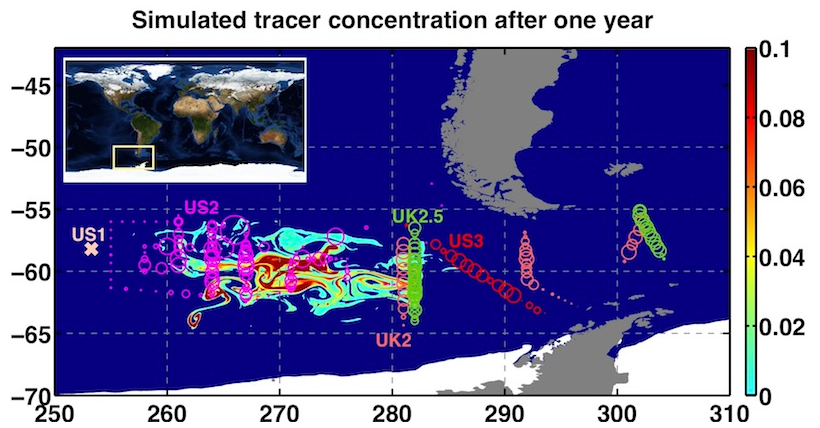PAOC Spotlights
Searching for Climate Clues in Southern Ocean Eddies
DIMES researchers hope that their data on ocean mixing may provide the missing ingredients to ocean climate models...
 which can then be used to understand past climates, as well as make projections about the future.
which can then be used to understand past climates, as well as make projections about the future.
'The vast Southern Ocean is the site of the upwelling branch of the ocean’s conveyor belt in which water sinks down in the cold areas of the northern North Atlantic and then slides up to the surface around Antarctica in the South. The cycle takes many hundreds of years to complete. This ‘overturning circulation’ brings up vast stores of carbon and heat stored in the ocean’s interior to interact with the atmosphere, and along with it, the key to a mystery so critical to our understanding of climate that a group of American and United Kingdom researchers receives 30 million dollars a year to solve it.'
In this article, collaborators in the multi-million dollar Diapycnal and Isopycnal Mixing Experiment in the Southern Ocean (DIMES) project, among them Raf Ferrari, John Marshall, and Ross Tulloch from PAOC, as well as others from WHOI, talk to Oceans at MIT about their research and why it is important.